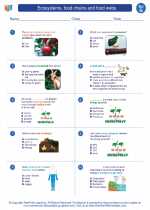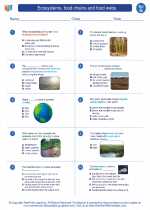Viruses
Viruses are microscopic infectious agents that can only replicate inside the cells of a living host. They are not considered living organisms because they cannot carry out their own metabolic processes and require a host cell to reproduce.
Structure of a Virus
A typical virus consists of a genetic material, either DNA or RNA, surrounded by a protein coat called a capsid. Some viruses also have an outer envelope made of lipids.
Classification of Viruses
Viruses are classified based on their genetic material, structure, and mode of replication. They can infect a wide range of organisms including animals, plants, and bacteria.
Viral Replication
When a virus infects a host cell, it hijacks the cellular machinery to replicate its genetic material and produce viral proteins. This process often leads to the destruction of the host cell.
Effects of Viruses
Viruses can cause a variety of diseases in their host organisms, ranging from the common cold to more severe illnesses such as HIV/AIDS, influenza, and COVID-19.
Prevention and Treatment
Preventive measures against viral infections include vaccination, good hygiene practices, and avoiding close contact with infected individuals. Treatment options for viral diseases may include antiviral medications and supportive care.
Study Guide: Key Concepts
- What is the structure of a typical virus?
- How are viruses classified?
- Describe the process of viral replication.
- What are some common viral diseases and their effects?
- What are the preventive measures and treatment options for viral infections?
Study Guide: Practice Questions
.◂Science Worksheets and Study Guides Seventh Grade. Ecosystems, food chains and food webs

 Activity Lesson
Activity Lesson
 Worksheet/Answer key
Worksheet/Answer key
 Worksheet/Answer key
Worksheet/Answer key
 Worksheet/Answer key
Worksheet/Answer key
 Vocabulary/Answer key
Vocabulary/Answer key
 Vocabulary/Answer key
Vocabulary/Answer key
 Vocabulary/Answer key
Vocabulary/Answer key
 Vocabulary/Answer key
Vocabulary/Answer key
 Vocabulary/Answer key
Vocabulary/Answer key
